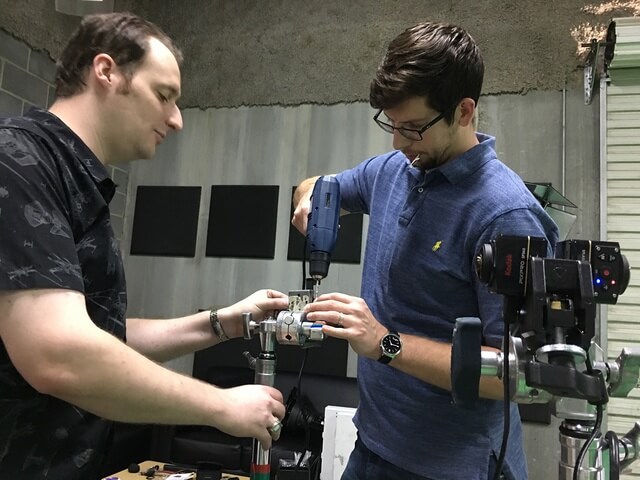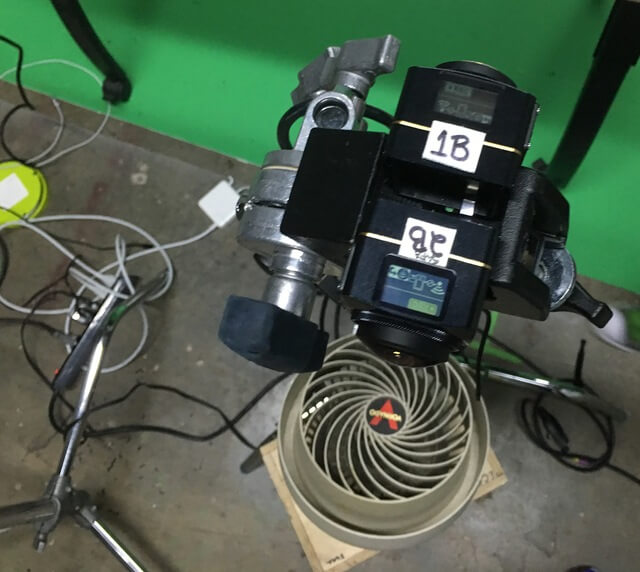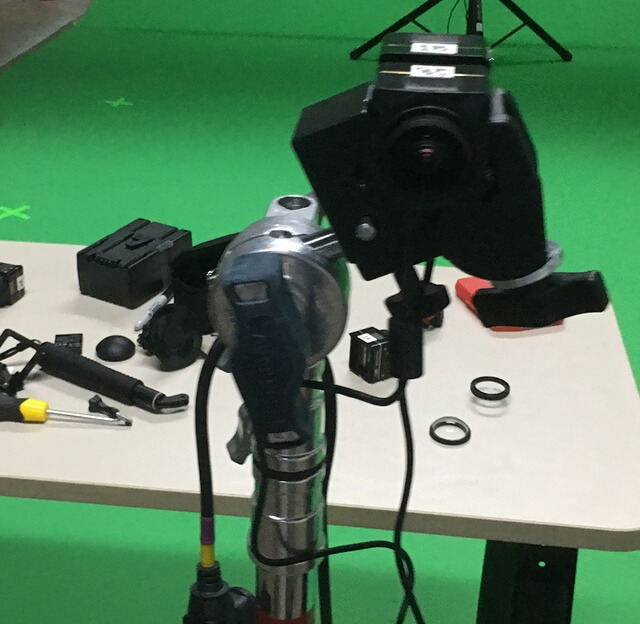
ECG Productions likes to stay on the bleeding edge of technology. We often live in that place where the tech has to catch up to the content we are asked to create. 360 video is a perfect example of a technology that is so new that the people who work with it are often doing so with no support, and no net.
We’ve been experimenting with 360 video technology since it first appeared and have watched the options for tech slowly grow over the past two years. We spotted a new piece of tech that looked like it would be worth checking out, so we picked up a few of the Kodak PIXPRO SP360 4K Dual Action Camera setups. Primarily we liked the idea that the Kodak cameras shoot in 4k, and there are only two of them in the array, not seven, like the older GoPro setups.
For those of you that don’t already know, you can strap seven GoPros into an array and roll all seven cameras, after checking all seven cameras’ batteries, formatting all seven cameras’ cards, and making sure all seven cameras’ lenses are clean. To be honest, I’ve used GoPros on dozens of shoots over the years, and I find them to be wildly unreliable. We usually have to keep an extra GoPro or two on-set as a backup in case the one we are using gets wonky. The thought of trying to run seven of them for any mission-critical shooting seems like a major mistake. Two cameras felt like a much more elegant solution, with a much lower chance of a camera going out. This also allows us to easily keep another set of two cameras on set if anything went wrong. This is a little more reasonable and responsible than keeping seven extra GoPros around.
Test new camera technology first
Once the Kodak cameras arrived we started to put them through the ringer to test them. Our first experiments worked out the limitations of the Kodak stitching software as well as the ins and outs of the camera itself. While the camera can shoot in 4k, it cannot shoot the full-dome image provided by the 235-degree fisheye lens. When you shoot at 4k, your dome image is cropped at the top and bottom of the 16:9 frame, but there are slightly better quality results when you shoot at 4k, so we decided it was the way to go..for now.
Just one problem, the free Kodak software can’t stitch these 16:9 4k videos. We had to branch out and research what stitching software we wanted to use to create the Latlong image used to display 360 video. This is how we came across AutoPana Giga. A great piece of software that will stitch together as many sources as you feed it, with much better quality than the free Kodak software.
We had some great success shooting outdoor, well-lit 360 video. We could get it to stitch together perfectly and make it look as good as 360 video CAN look when uploaded to YouTube.
Don’t let equipment limitations stop you from getting the job done
Recently, we had to push these camera beyond their limits in order to meet the needs of a job. A client approached us and asked us to shoot a concert for the artist Jidennna in 360 video. The venue; a dark club. The length of the concert; over an hour. How did the camera perform in low light, and how long could we run the camera? These are two tests we had yet to perform.
First things first, we needed to see how long these things could run. The documentation from Kodak states they can record on fully-charged batteries for 55 minutes. So, we gave it a try. We set them up and left them running, and low and behold, after about 36 minutes, both cameras completely shut off. Thinking this was a dead-battery issue, we removed the cameras from the dual-camera holder and rigged them into position using two maffers clamps so we could run them off USB power. Why would we do this? Because the dual-camera holder that comes with the camera makes it so you can’t access the USB port on the bottom of the cameras, which is how they get power when not on batteries. Annoying, but workable. We tried the test again. Same results, but this time, they ran for even less time, closer to 15 minutes. When removing the cameras from our rig, we noticed they were incredibly hot. A little research on Redit showed us that other people were having the same problem.
There was definitely an overheating issue. We could tell that much of the heat came from the battery case on the back of the camera, and when two cameras are set up back-to-back the heat gets out of control.

So with a little cleverness and some determination, we removed the battery doors entirely, left a little space between the cameras, and forced air through that space between the cameras. At first we used a Vornado on the floor as a proof of concept. It worked! The cameras went for a full hour and 20 minutes without stopping at all. Next we refined the setup by purchasing some 80mm usb-powered CPU fans and we attached them to the top of the cameras. This did the trick. We could get record times all the way up to the limit of the media in the camera.
It wasn’t a pretty setup, but it would work for almost two hours of continuous record time – more than we needed for this particular shoot.
Next was the low-light sensitivity test for the cameras, this proved simpler. The cameras are not made for really low light, and while they do have a low-light feature, it’s basically just a gain adjustment that amps up the noise in the shot quite a bit, and makes the footage streaky and look like garbage. We discovered, through experimentation, that the camera could definitely get a good exposure on the lit stage, but the crowd, unless we lit it, was just not going to be as clear as the stage. These cameras are good, but they are NOT strong in low-light, and after some discussions with the client, we decided to live with a dimly lit audience, so as not to ruin the ambiance of the show.
Waiting it out while new tech catches up
360 is a new technology, and as a result it is currently pretty limited. There are a lot of new pieces of tech out there that will be available in the next few months that look really promising. The Orah and Sphericam v2 are just two of the new 4k options that are offering stitching as a part of the camera solution, so you can actually look at what the camera sees live. The Orah is even set up to live-stream 360 content to the Web. You can check out more about these cameras here: http://www.sphericam.com/ and https://www.orah.co/about/
Looking to shoot 360? Have some tips on the tech? Reach out to me and let’s chat, I’d love to hear your thoughts.


One Response
Hey guys, would you be able to send any comparison between 4k stitching with autopano vs using the kodap pixpro stitch software which exports at the lower quality of 3840? Just curious whether it’s worth it to use a different software to get a better quality from the dual setup of these cams. thanks